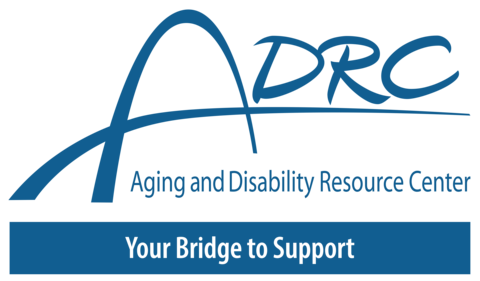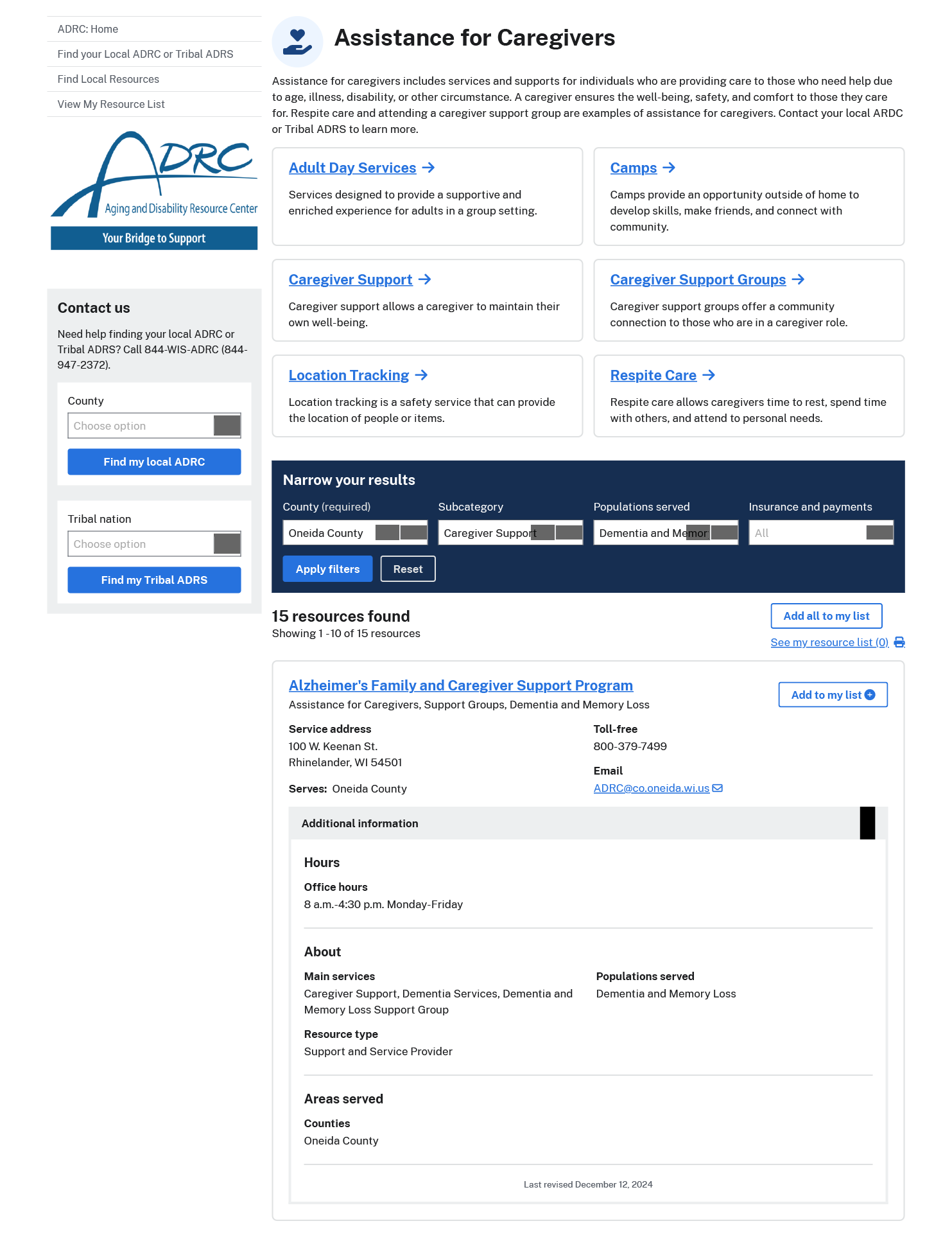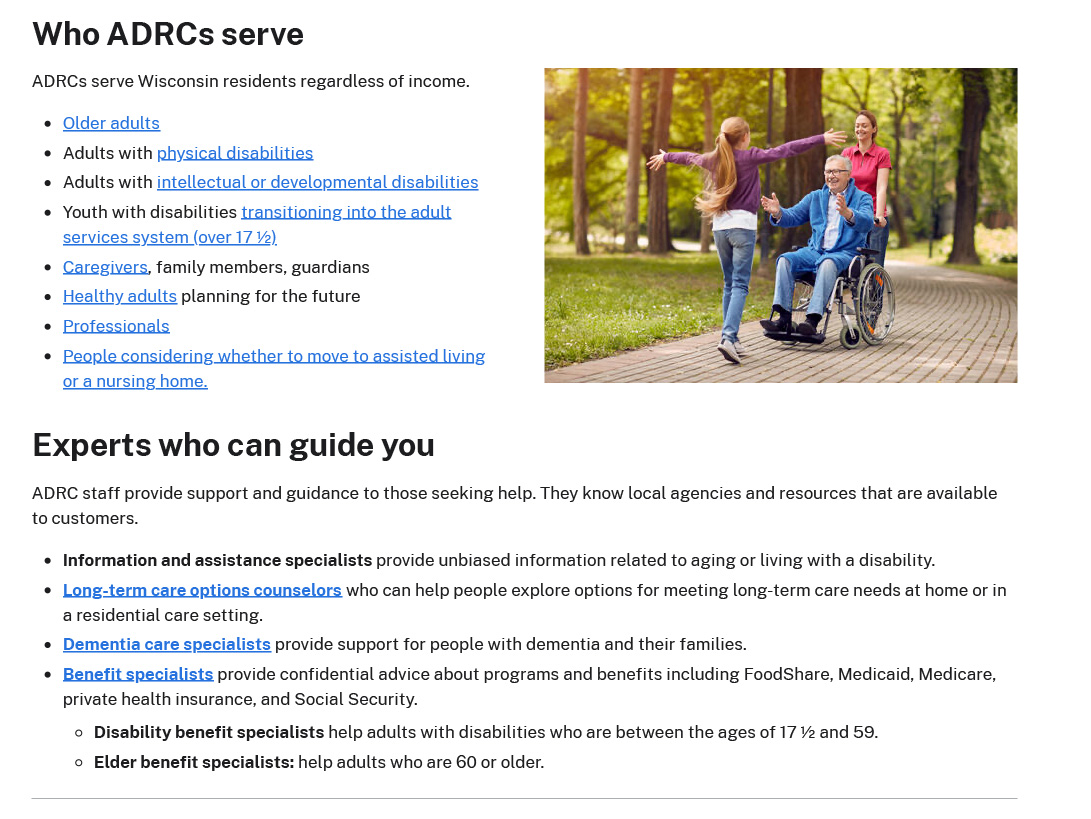
ADRC Wisconsin
An accessible services directory built for staff and citizens’ needs
A brand new directory to dramatically improve access

Wisconsin’s Aging & Disability Resource Centers (ADRCs) provide vital services to the state’s population. ADRCs give aging and disabled citizens and their loved ones access to key information about resources and service providers within their area.
Visit the siteWisconsin’s Department of Health Services (DHS) and Bureau of Aging and Disability Resources (BADR) wanted to create a brand-new, state-wide directory of ADRCs and the resources they provide. They entrusted Palantir.net to deliver a modernized site and directory, with users’ needs infused into every phase of the project.
Prior to this project, there was no one state-wide directory for Wisconsin ADRCs. The disabled and elderly residents of Wisconsin had to manually navigate the websites of 54 different ADRCs and 11 Tribal Nation ADRCs, each with their own information architecture, layout, and UX. Additionally, much of the information the directory aimed to capture simply wasn’t available online. Access to many of the resources was contingent on finding and calling a local ADRC, placing a significant burden on staff to manually connect people to the relevant information.
What BADR envisioned was an ADRC site and directory that was:
- Designed to the specifications of the DHS web design system
- Fully compliant with WCAG 2.0 AA accessibility standards
- Presented with a uniform information structure across all ADRCs in a repeatable, understandable format
- Optimized for usability and user experience, including site visitors who are less familiar with internet navigation
Palantir had already worked with Wisconsin DHS on creating the DHS Drupal platform. This platform was designed with projects like the ADRC application in mind — we aimed to build a platform that would offer easy options for extension and centralization after the core platform project wrapped up. Following the success of the initial DHS Drupal platform, Wisconsin DHS and BADR entrusted us to bring the vision of a unified ADRC service to life.
Collaboration built into every process
Palantir’s style of working — where we’re constantly discussing what’s going to work best, and how we can make it even better — has been fantastic.
A feature-rich site tailored to users’ needs

Delivery with proven user satisfaction
664%
Increase in number of resources clicked 3 months post-launch
138%
Increase in page views on ADRC homepage 3 months post-launch
35%
Increase in average engagement time 3 months post-launch
Development designed to last

